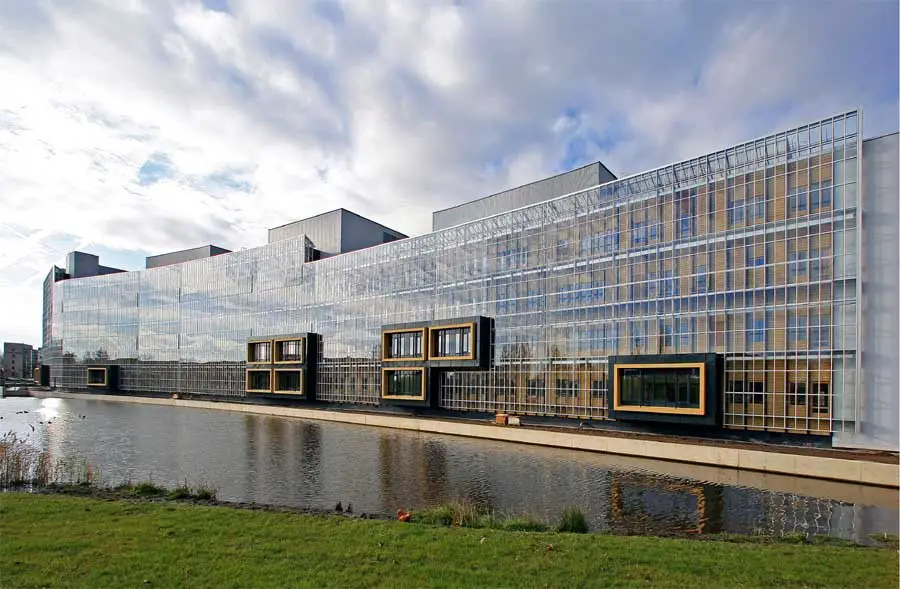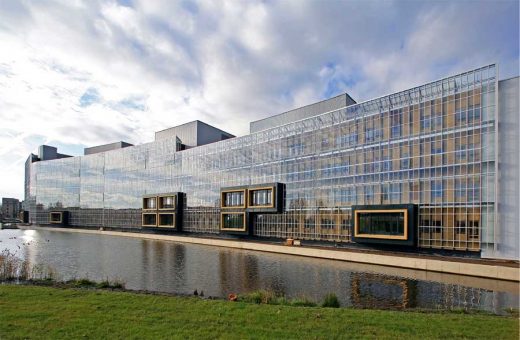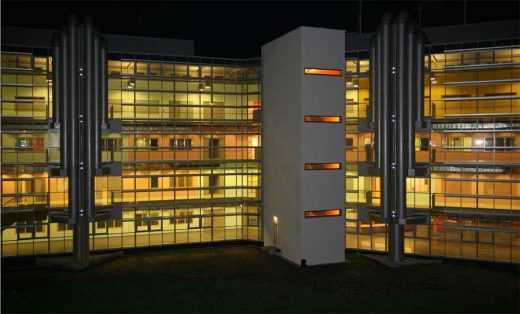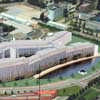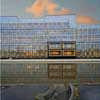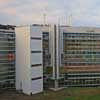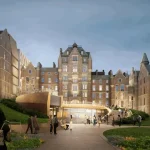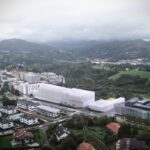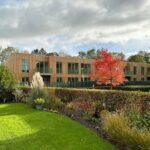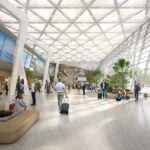New Martini Hospital, Groningen Building, Holland, Images, Architect, Photos
New Martini Hospital Groningen, The Netherlands
Contemporary Groningen Building design by Burger Grunstra architecten adviseurs
14 Aug 2008
New Martini Hospital
Flexible concepts for the New Martini Hospital in Groningen, The Netherlands
Design: Burger Grunstra architecten adviseurs
Flexibity is currently one of the most important factors in an ever mutating healthcare environment where rapid developments in medical technology make it difficult to predict the future. That is why it is import to design a hospital now, that will last for the next forty years and can easily adapt itself to an unknown future.
It is for this reason that the concepts of the IFD programme spearheaded the design of The New Martini Hospital in Groningen, The Netherlands for which it was awarded demonstration status and a grant from the Dutch Government.
The following is a brief explanation of the Dutch IFD programme:
The IFD programme was started by various Dutch ministries including housing, environment and economic affairs as an initiative to encourage innovation in the building sector. The I stands for Industrial which is prefabrication and standardization of building products. This introduces a high degree of modularity in the design. Here construction becomes assembly.
The F stands for Flexible. A building must be designed in such a way that it can be easily changed. Here renovation becomes relocation. The D stands for Demountable. Building components are joined in such a way that they can be easily be demounted without damage and reused else where. Here demolition becomes disassembly.
Flexible Site Development Strategy
With the design for the Martini Hospital the new building is positioned next to a building that is already halfway through it’s 40 year lifespan with the expectation that it will not be invested in for the next 20 years. This replacement can then happen through a new building.
This line can be pulled through to a period over 40 years when the now-to-be-built building is ready to be replaced in 2047. In this way there will always be space on the site to develop. Another possible choice exists in 20 years time, when the existing building will be demolished and the new building is ready for a large renovation.
It is possible that this site could become a top location in Groningen which could yield enough money that it would be more advantageous to build new in a more accessible place in Groningen. It is possible to make the new building adaptable for more functions. It is also possible, for example, to situate offices there or even the possibility to accommodate about 250 housing units exists.


photos : Derk Jan de Vries Vos Interieur
Uniformity
It is always difficult to predict what functionality must be accommodated for in a hospital building with a set lifespan of 40 years. This was our point of departure for the design. For this reason we chose a uniform building block which, in a general sense, complies with the demands of safety, natural daylight, structure, services and floor planning.
The design brief was tested on a number of important frequently occurring departments such as general nursing and outpatient clinic.
This investigation resulted in the “ideal” dimensions of a 60 x 16m for a building block with an area of approximately 1,000m².
A uniform building block therefore acquired a useful aspect in that it could be functionally totally interchangeable in the design phase as well as later on once the building is being used. A nursing department can be converted to an outpatient clinic or offices. Also extensions can be randomly hung on the facade to gain extra floor area so that also bigger departments can be accommodated. The only fixed elements are the services shafts which always remain in the
middle of the block.
All floor layouts are based on an efficient 300mm grid. The elevations have also been designed to allow for flexible wall positions. Windows and mullions have been positioned to line up with this 300mm grid. Through an urban planning study, these building blocks have been positioned and linked in such a way that has given the building two main forms: a “zigzag” which integrates with the two directions of the surrounding buildings and a curved form which ‘leads’ the way along the curved road.
16m width
An important difference between The New Martini Hospital and regular Dutch hospitals is the use of a narrower 16m width. This allows the possibility for much more natural daylight penetration. This makes it possible to completely change the functions and for example not having an inner middle zone which can only be used for spaces that don’t require daylight for example storerooms, bathrooms and services.
Rather now a storeroom against the façade than later a work space without daylight. This increased natural daylight penetration with the resulting views to the outside world also contributes to the creation of a appealing Healing and working environment.
IFD principles – detailing
With lots of research and product development we were able carry out the IFD principles through to the details. With the help of modular partition walls, coupling services and furniture it is possible at room level to carry out a number of alterations without disturbing the neighbouring spaces. Points for electrical, medical gases and water are movable as well as cupboards
and counters.
The furniture is also built up of a number modular units which can be attached or detached from each other to suite a new function. Even the curved façade behind the glass climatic curtain wall is made up of removable panels which can be changed to suite the functions it encloses. The F for flexibility has therefore lead to the D for demountable which makes the I for industrial production possible. The contractors let us know that due to a great amount of prefabrication that it is possible to build this 60,000m² building in 26 months.
Colour concept explanation & interiors
Peter Struycken, a famous Dutch artist specializing in colour, was commissioned to make a colour palette for the new hospital. He produced a matrix of 46 harmonious colours. Colour selection for the new hospital was restricted to this palette. Colours are also applied with the flexible concept in mind. This has been achieved by randomly applying the colours throughout the whole building. The colours are not associated with function or rooms.
New Martini Hospital, Groningen – Building Information
Total Floor Area: 58.000m²
Building Cost: 153 million euro
Start construction: Sep 2004
Completion: Aug 2007
Architect: Burger Grunstra architecten adviseurs
New Martini Hospital images / information from Burger Grunstra architecten adviseurs
Location: Groningen, Netherlands, western Europe
Architecture in The Netherlands
Contemporary Dutch Architecture
Netherlands Architecture Designs – chronological list
Amsterdam Architecture Walking Tours by e-architect
Dutch Architect – design firm listings
Education Executive Agency and Tax Offices, Groningen
Design: UNStudio, Architects
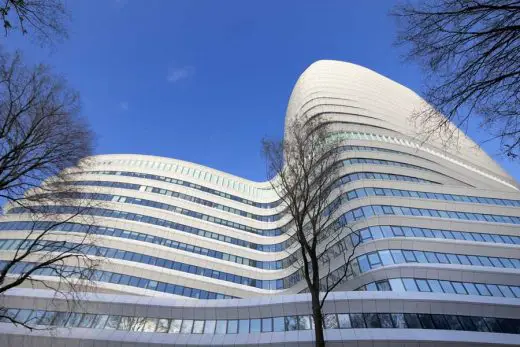
photo : Ronald Tilleman
EEA and Tax Offices Groningen Building
Dutch Architecture – Selection
Comments / photos for the New Martini Hospital Groningen Architecture page welcome
Website : www.burgergrunstra.nl

